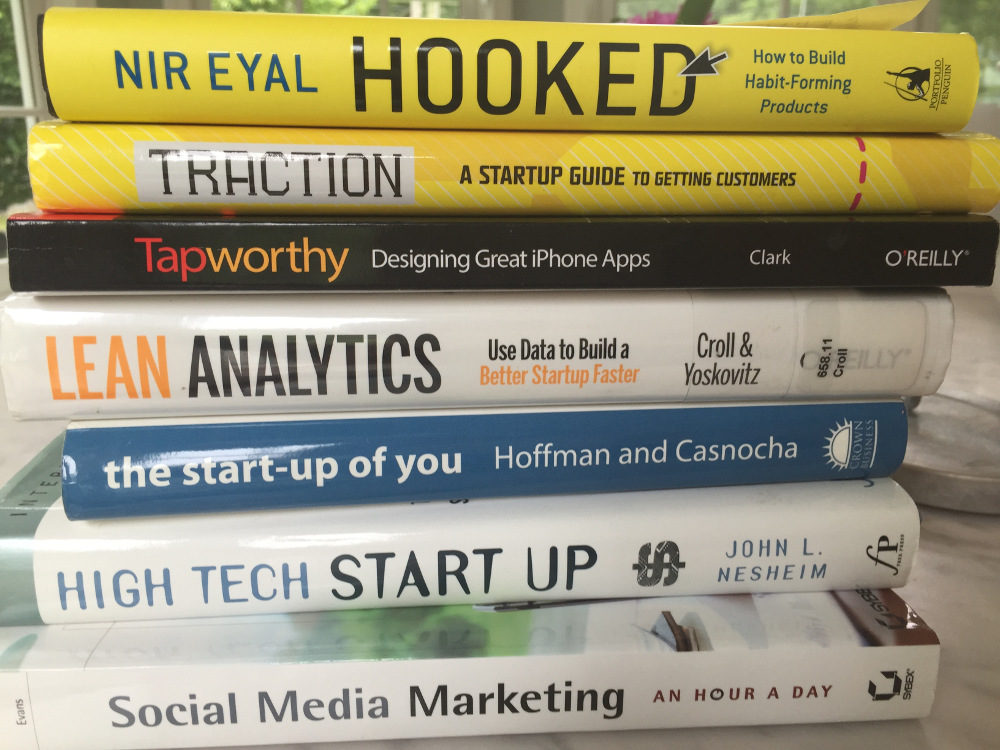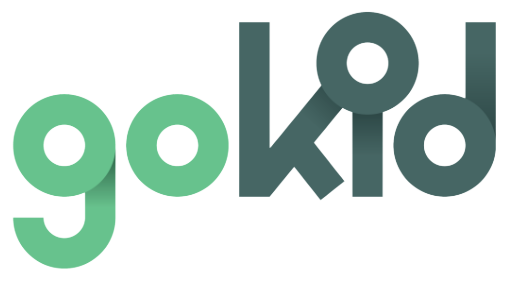
Sophie and I got to know each other as fellow school parents, but most importantly, we spent many evenings (over the course of several years) in the same book club. We both love to read, so our natural instinct after deciding to start a company and build an app was to dig into books.
Our reading list for launching an app over the next few weeks looked like this:
- Secrets of My App Success, by Jesse Waits: The least expensive way to quickly jump into the basics of App development – and we could even read it on the iPhone! For a mere $ 3.99 the (lean) ebook talks about all the necessary steps to actually building an app (without coding knowledge!) and getting it onto phones. Truth be told, you won’t be able to actually build an app after reading the book. But it gave us a great understanding of what is needed during the entire process of design and app development, getting it into the app store, going to market, and marketing to users. We ended up using the book’s agenda as our 6 months to-do list, super helpful and a quick two-hour read.
- The Founder’s Dilemmas by Noam Wasserman: A classic in the entrepreneur world, a guide to all the questions startup founders face when launching a business from financing to strategic and legal questions, and even questions around founding and running the company. We skimmed the book, as the sheer volume was more information than we needed, but the book did provide some key information and advice. It helped us to figure out the share each of us would own in our new venture and gave us a good overview of funding choices. It also helped us grapple with tricky questions like What happens if one of us decides to quit the new company? It was good to confront these questions early on, and they are now addressed in our operating agreement.
- Tap Worthy – Designing great iPhone apps. The title says it all: a good visual guide and reminder of what works (and what doesn’t) when it comes to designing an app. The book is amazing as it has tons of pictures and explains the key functionalities of a well-designed app. It could NOT, however, replace hiring a very talented UX / UI design team!
- The Lean Startup by Eric Ries: Another classic on building a startup with a scientific approach of rapid prototyping testing and validating. Nothing is as lean as the book title might suggest – it still costs real dollars to hire people who can code and design. But the book helped us in avoiding costly mistakes and asking the right questions before hiring, which included (crucially) asking candidates to demonstrate their skills, live, in the interviews. As the Lean Startup method has become very popular, O’Reilly, the publisher decided to branch into a series – Lean Marketing, Lean Analytics, Lean Customer Development, Lean UX, etc. We also downloaded the Lean Analytics book, written by Alistair Croll & Benjamin Yoskovitz. Lots of helpful examples and best practices for making data-driven decisions, using the right metrics, especially in the early stages of a startup. The book covers many other aspects of a startup, so the only criticism is that it’s a little too broad and not very lean when it comes to digestible and actionable steps.
- Traction by Justin Mares and Gabriel Weinberg. A startup guide to getting customers. A blog post recommended this book. I love systematic advice that makes sense. The author impressively describes that even the best product will fail if the customers/users don’t show up. He goes into all potential marketing tools and channels and gives good advice on how to pick the right channel. The best part of the book? You get online tools in the form of Excel sheets and online documents to track progress and start measuring the venture.
I loved all of the books for their practical and very hands-on approach. As a nontechnical person, and a non-designer (though I love looking at good design) I now understand what we need to do. To complement these books, we searched for online tools to quickly learn some basics. We found some great blogs Funders and Founders for example and subscribed to Lynda.com for learning how to use WordPress and some of the other online technologies we’ll be using. Other blogs/newsletters I have been subscribing to for the past years are:
- TechCrunch – good overview of what is happening in the tech world.
- CBInsights – industry trends and overviews
- a16z newsletter – Andreessen Horowitz’s insights on what they are looking at (and reading)
Mind you, all the reading cannot replace doing it. I can’t even describe how much fun we’re having creating the GoKid app and trying to anticipate and think through all of the different scenarios when users will employ the GoKid app to make their life easier. And we are sure, despite the excellent literature, we’ll be learning the most from our customers, very busy parents with too little time on their hands.
In this high-tech world of apps and wireless everything, it has been interesting to discover that developing an app requires some old-fashioned research.


